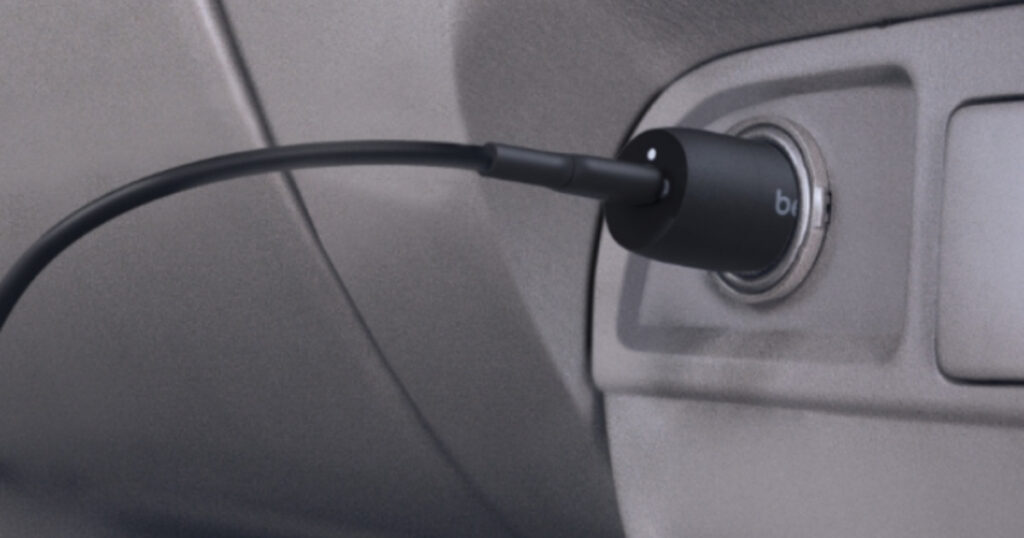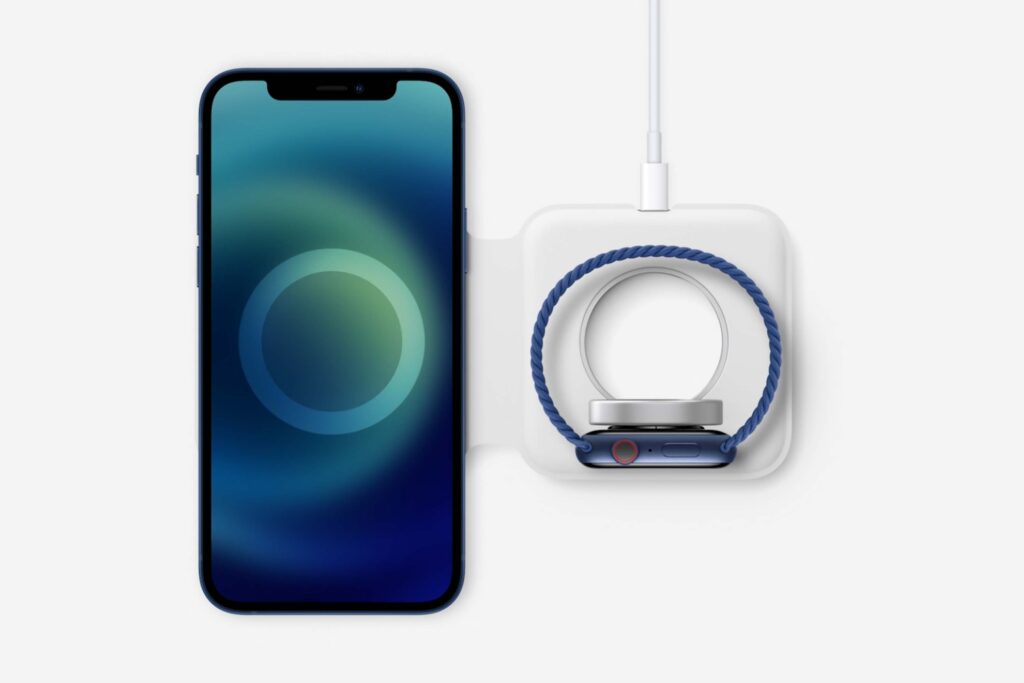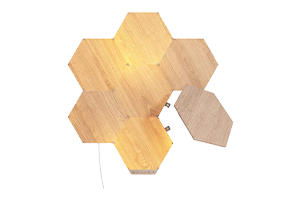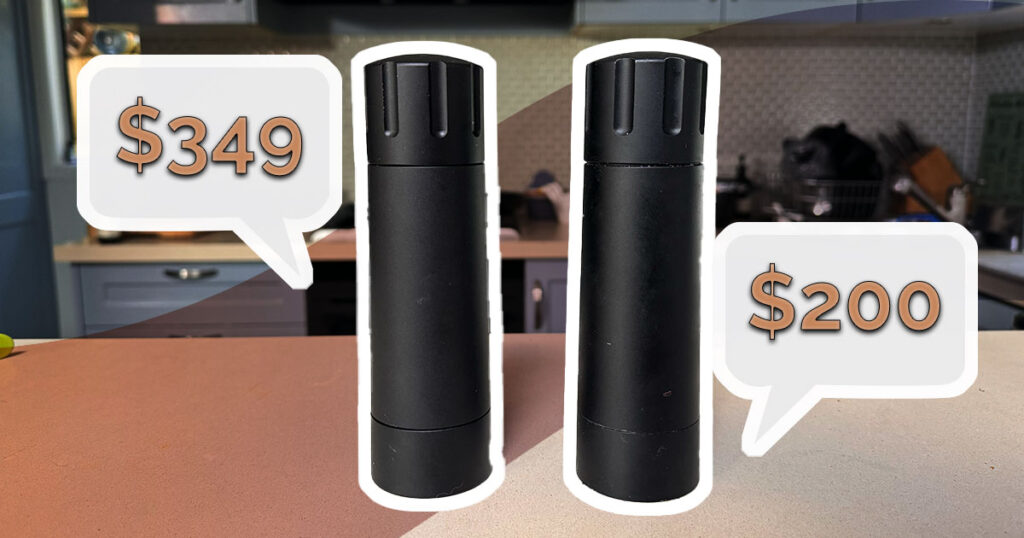Nanoleaf slips into something more comfortable with its homely Elements range.
Nanoleaf Elements Wood Look review: Glow up
Like a moth to a flame, I’ve always been mesmerised by the luminous glow from the Nanoleaf Shapes' tessellating smart light panels. But just like rollerblades and Vodka Cruisers, there’s the nagging feeling that I might be just a little too old to have my own RGB-drenched gaming dungeon. With the release of the more homely Nanoleaf Elements, I can finally experience the wonders of smart panel lighting without turning my family’s living room into a bargain-basement rave cave.
Quick verdict: Are Nanoleaf Elements smart lights any good?
Nanoleaf's new range of Wood-Look panel lights offers a warmer, cosier alternative to the company's more colourful range. They feel more at home in shared living spaces, like the lounge or dining room, and even when switched off, the Nanoleaf Elements look like a classy piece of modern wall art. With that said, you'll pay almost 60% more per panel if you opt for Elements over the multi-coloured Shapes lights, which is a steep premium to pay for what is ultimately a warmer but more restricted colour range. If your heart's set on the Nanoleaf Element's more mellow vibe, I'd recommend waiting for a serious discount or dipping your toes in with the Shapes range.
- Wood-Look looks lovely on or off
- Touch gestures are fun to show off
- Rhythm scenes work better than expected
- Moving can be painful (and risky for renters)
- A pretty penny to pay for smart lights
- A touch more detail could help setup
Pretty lights for a pretty penny
Despite Nanoleaf’s IKEA-grade step-by-step instructions, I still managed to misjudge the positioning of the panels by a fair distance, resulting in the beautiful but off-centre pattern you see in the pictures below.
No problem, I thought. I’ll just buy a few more panels to make up for my poor planning. Then I checked the price on the 3-pack extension (roughly $149) and decided I could deal with the askew living room view for a little while longer.
That’s the only real downside to the Nanoleaf Elements, it's far too expensive for what is. At the end of the day, a hunk of plastic with a few LED lights. They’re clever, touch-sensitive hunks of plastic but plastic all the same.
Nanoleaf Elements price and availability
The Nanoleaf Elements 7-piece starter kit will cost you $429.99RRP from the Nanoleaf website and a 3-pack extension kit will cost you $149.99. Nanoleaf Elements are also sold through Apple, JB HI-FI, Amazon, Scorptec and eBay but you’ll pay roughly the same price from each of those retailers. There are some third-party sellers on eBay that have them as low as $409.
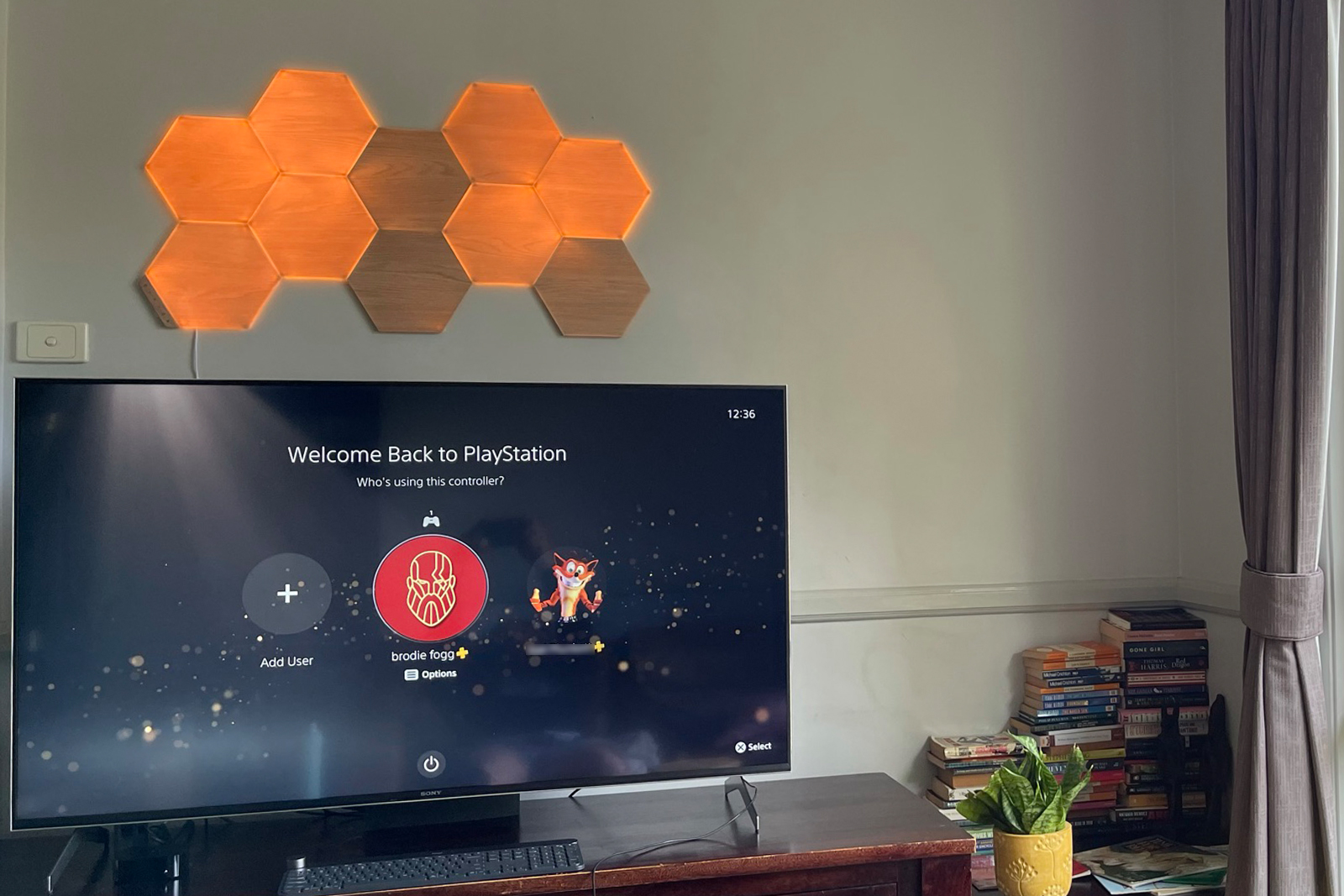
Nanoleaf Elements setup: Easy as 1, 2, 4
Part of what you’re paying for with Nanoleaf is the whole user experience. Everything from unboxing, to set up, scheduling, setting scenes and syncing music is a delight. It’s no surprise that Apple - a company known to obsess over experience while charging top dollar - is backing Nanoleaf by selling its products through the Apple store.
When you first unbox the Nanoleaf Elements panels, you’ll be given a few QR codes to use: one will direct you to the basic setup, the others will link your Nanoleaf product with your smart home/assistant of choice (e.g. Apple HomeKit, Google Home). That second one was a nice touch. As much as I try to embody the archetypal smart home enthusiast, sometimes I just can’t be bothered connecting all these apps and services.
After downloading the app and muddling through its menus, it’s time to set the Nanoleaf panels up. The point of no return. I stressed over the placement of the panels so much that I put it off for a few nights.
As helpful as the app’s guidance is, it doesn’t offer any reassurance or tips for what to do if you mess things up.
Eventually, I decided on a layout and got to work with… just okay results.
I can’t stress enough how much it pays to follow Nanoleaf's suggestion to wipe down the surface you’re attaching the panels to. Any dust or oil present on the wall will eventually be your Nanoleaf’s downfall. Maybe not today, maybe not tomorrow, but one day. I used a microfibre cloth to dust the wall followed by a clean with alcohol wipes, waited a few moments for the alcohol to dry, then started mounting by massaging the panels with my knuckle for 30 seconds at a time, as directed. So far, I’ve had no problems.
For all the Nanoleaf’s hand-holding, I stuffed up early and used too many connectors on the first few panels.
In hindsight, it might seem obvious that you only need one connector per panel, daisy-chaining the power supply through each hexagon. It wasn’t for me. I went all out, adding connectors to every side where an adjacent panel was planned to be.
A simple reminder or a few spare connectors would have been greatly appreciated.
Thankfully, removing connectors isn’t too difficult once the glue has set and the panel is stuck firmly to the wall, but while it’s still fresh, the last thing you want to do is pry the panel away from the wall to retrieve a connector and risk tearing it off.
Nanoleaf app
The Nanoleaf app showcases the best and worst of the whole experience.
There are some nice touches. The AR (Augmented Reality) Layout Assistant uses your phone’s camera to help you plan the ideal layout for your Nanoleaf panels. There’s also a healthy selection of scenes to set the mood (Embers, Fireflies and Clouds are a few examples). All of these features are nice to have but the one thing that dampens the mood is how buggy the app is and how generally confusing its UI can be.
The AR feature is great when it works. More often than not, I’d flick over to the Layout Assistant and the app would become completely unresponsive. If you’re looking for inspiration, I recommend heading over to Nanoleaf’s Instagram page or Pinterest, rather than relying on the Layout Assistant.
In addition to the bugs, the app’s UI is a bit of a mess. Sections are confusingly named and labelled, settings aren’t always where you expect them to be and the scheduling is cumbersome.
Tear down
The app might suck at times but Nanoleaf does go above and beyond to assist in the setup. Truly. But once it’s time to remove them, there’s no help to be found.
The glue might as well have been engineered by Peter Parker himself because they’ve got no problem sticking to the wall but getting them off is a different story.
If you’re renting and you’re worried about damaging the walls, I’d recommend buying some 3M velcro strips to use as a buffer between the Nanoleaf panels and your wall. That’ll make them a lot easier to move between rooms too.
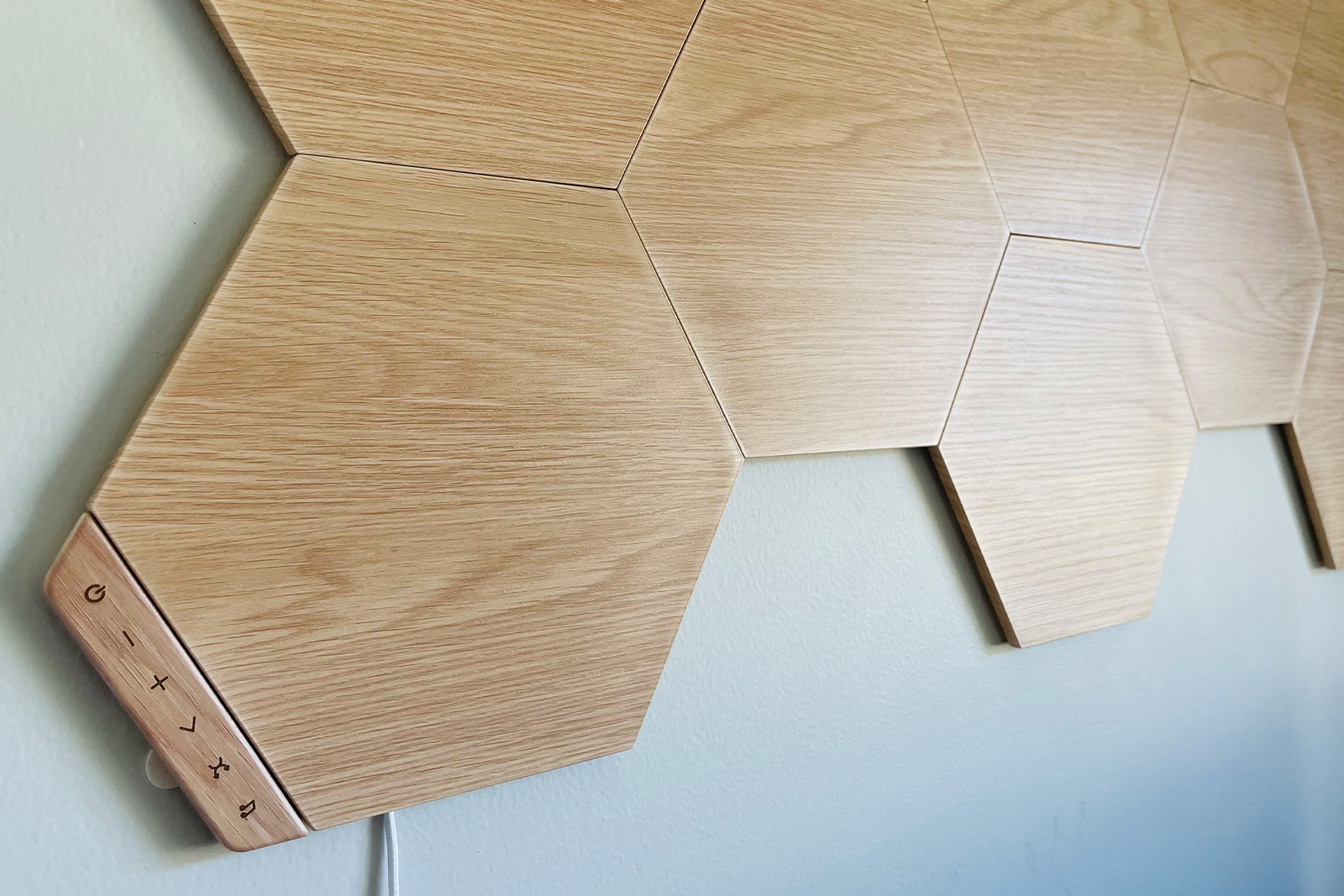
Design and look: Making a scene
Okay, so you’ve stumbled through the setup process with middling results. This is where the fun begins.
The beauty of the Nanoleaf Elements Wood-Look range is they look lovely switched on or off. Rather than an array of blank white hexagonal panels, the Nanoleaf Elements have a wood-grain finish that’s close to a light oak.
When powered on, the colourful Nanoleaf Shapes are designed to liven up a home office or bedroom with vivid RGB patterns whereas the Elements’ warmer lighting is a better fit for shared living spaces. They emit a limited range of colours between white and orange, imitating a sunset or crackling fire in some of the more vibrant scenes.
Speaking of, you won’t have access to the full range of Nanoleaf Shapes RGB scenes but the Wood-Look Elements will still do its best to imitate them with its calmer colour palette. There’s also a whole new range of scenes tailored to the Nanoleaf Elements’ warmer range.
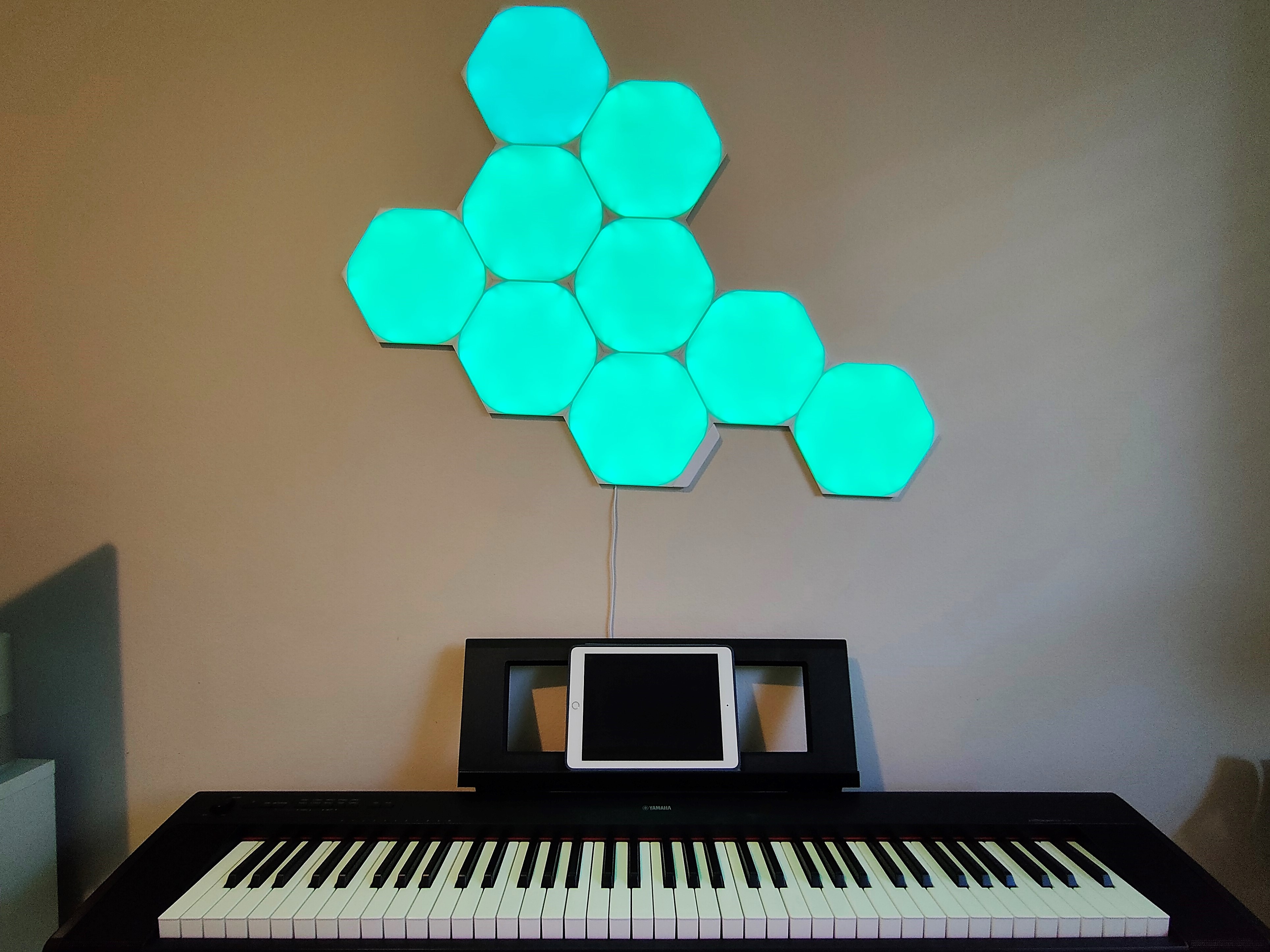
Pictured: Nanoleaf's more colourful Shapes range.
In smart lighting, most brands offer scenes in their apps: pre-built colour and brightness sequences that are usually themed to give you a rough idea of how it will look (e.g Embers, Clouds, Sunbeams in the case of the Nanoleaf Elements). Scenes can be scheduled at different times of the day or night, to better reflect the mood you're trying to set.
I prefer the cozier hues of the Nanoleaf Elements over the multicoloured Shapes, but they won’t be for everyone. Even the more lively Nanoleaf Elements scenes don’t have quite as much energy as the Shapes equivalent.
If the Nanoleaf Elements are a whisky neat, an open fire and Steely Dan, the Nanoleaf Shapes are a case of Smirnoff Double Blacks, Darude’s Sandstorm and aggressive dabbing.
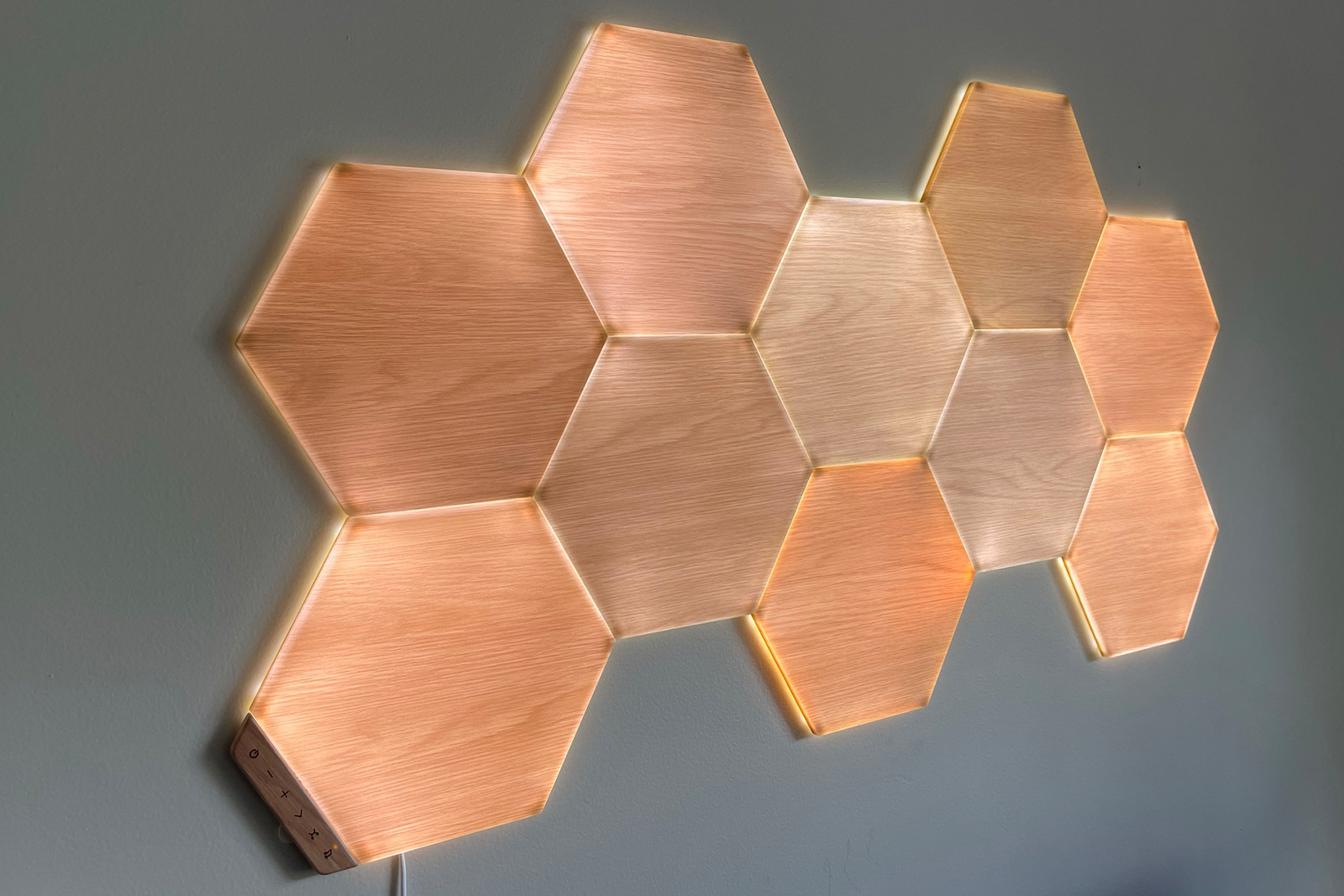
Features: Rhythm of My Hearth
You don’t need to spend over $400 to buy some fancy flashing lights but the lights themself are honestly only half of the allure here. Nanoleaf’s smart light panels have two headline features that help them outshine the competition: Rhythm scenes and touch-sensitive panels.
The touch-sensitive panels are, first and foremost, great to show off when you’ve got visitors. The Nanoleaf app lets you map different swipe motions to different actions. For example, swiping up to increase brightness, down to dim and double-tap to power on and off. Half the fun is feeling like you’re a crew member of the Starship Enterprise but it’s also just practical to have those additional controls when you don’t have your phone nearby (or a smart assistant in earshot).
The second most impressive feature of the Nanoleaf lights is the audio-synced Rhythm scenes. These scenes will animate with the tempo of whatever audio is playing in the room or, as I found out late into the review, your voice which provided a good twenty minutes of fun.
The tempo of the lights doesn’t always match the track but to be fair, Scatman John's seminal hit Scatman isn’t easy to keep up with. Celine Dion’s My Heart Will Go On is more the Nanoleaf Elements’ pace. Different rhythm scenes respond differently to frequency, volume and beat so hop into the app and experiment with what’s available.
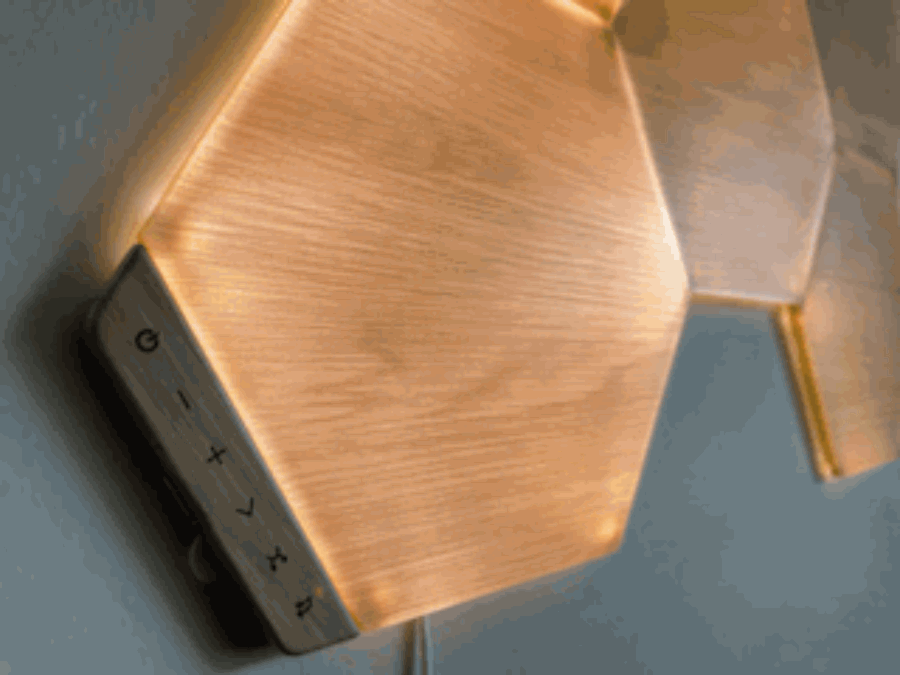
Conclusion: Is it worth over $400?
There’s a lot of fun to be had with Nanoleaf smart lights, regardless of which model you go with.
The Elements Wood-Look Hexagons are easily the best-looking product in the bunch but you’re paying a lot more for the more homely finish and ultimately getting fewer colour options. That works for me. I love the fireplace feel of the Elements panels but if you’re dropping between $300 and $450 for smart lights, my guess is you’d want the full RGB range of the Shapes and Canvas products (which retail a lot cheaper than the Elements).
If you’re absolutely certain that the calmer colour palette of the Elements range is more your tempo, I’d recommend waiting for the price to drop a little closer to the Shapes and Canvas range before going all in.
Related Articles
